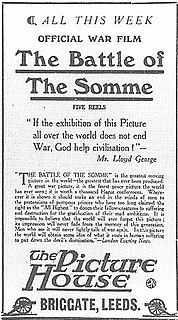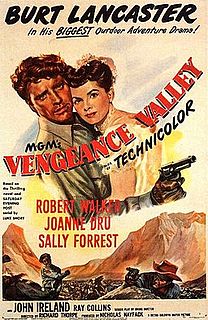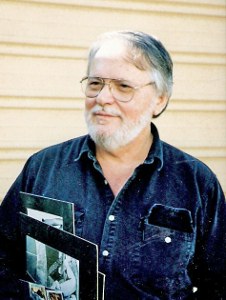3D films are motion pictures made to give an illusion of three-dimensional solidity, usually with the help of special glasses worn by viewers. They have existed in some form since 1915, but had been largely relegated to a niche in the motion picture industry because of the costly hardware and processes required to produce and display a 3D film, and the lack of a standardized format for all segments of the entertainment business. Nonetheless, 3D films were prominently featured in the 1950s in American cinema, and later experienced a worldwide resurgence in the 1980s and 1990s driven by IMAX high-end theaters and Disney-themed venues. 3D films became increasingly successful throughout the 2000s, peaking with the success of 3D presentations of Avatar in December 2009, after which 3D films again decreased in popularity. Certain directors have also taken more experimental approaches to 3D filmmaking, most notably celebrated auteur Jean-Luc Godard in his film Goodbye to Language.

The Battle of the Somme, is a 1916 British documentary and propaganda war film, shot by two official cinematographers, Geoffrey Malins and John McDowell. The film depicts the British Expeditionary Force in the preliminaries and early days of the Battle of the Somme. The film premièred in London on 10 August 1916 and was released generally on 21 August. The film depicts trench warfare, marching infantry, artillery firing on German positions, British troops waiting to attack on 1 July, treatment of wounded British and German soldiers, British and German dead and captured German equipment and positions. A scene during which British troops crouch in a ditch then "go over the top" was staged for the camera behind the lines.

The Outlaw is a 1943 American Western film, directed by Howard Hughes and starring Jack Buetel, Jane Russell, Thomas Mitchell, and Walter Huston. Hughes also produced the film, while Howard Hawks served as an uncredited co-director. The film is notable as Russell's breakthrough role, and she became regarded as a sex symbol and a Hollywood icon. Later advertising billed Russell as the sole star. The Outlaw and The Ox-Bow Incident are the earliest films in the AllMovie list of psychological Westerns.

Till The Clouds Roll By is a 1946 American Technicolor musical film produced by Metro-Goldwyn-Mayer. It is a fictionalized biopic of composer Jerome Kern, portrayed by Robert Walker. Kern was originally involved with the production, but died before it was completed. It has a large cast of well-known musical stars of the day who appear performing Kern's songs. It was the first in a series of MGM biopics about Broadway's composers; it was followed by Words and Music, Three Little Words, and Deep in My Heart.

Dixiana (1930) is a lavish American pre-Code comedy, musical film directed by Luther Reed and produced and distributed by RKO Radio Pictures. The final twenty minutes of the picture were photographed in Technicolor. The film stars Bebe Daniels, Everett Marshall, Bert Wheeler, Robert Woolsey, Joseph Cawthorn, Jobyna Howland, Ralf Harolde, Bill "Bojangles" Robinson and Dorothy Lee. The script was adapted by Luther Reed from a story by Anne Caldwell.

Vengeance Valley is a 1951 American Technicolor Western film directed by Richard Thorpe and starring Burt Lancaster, with a supporting cast featuring Robert Walker, Joanne Dru, Sally Forrest, John Ireland and Ray Collins. It is based on the novel by Luke Short. In 1979, the film entered the public domain in the United States because Metro-Goldwyn-Mayer did not renew its copyright registration in the 28th year after publication.

Charles William Rotsler was an American artist, cartoonist, pornographer and science fiction author. Rotsler was a four-time Hugo Award winner and one-time Nebula Award nominee.

The Prizma Color system was a color motion picture process, invented in 1913 by William Van Doren Kelley and Charles Raleigh. Initially, it was a two-color additive color system, similar to its predecessor, Kinemacolor. However, Kelley eventually transformed Prizma into a bi-pack color system that itself became the predecessor for future color processes such as Multicolor and Cinecolor.

The Painted Hills, also known as Lassie's Adventures in the Goldrush, is a 1951 drama film produced by Metro-Goldwyn-Mayer (MGM) and directed by Harold F. Kress.

Millie (1931) is a pre-Code drama film directed by John Francis Dillon from a screenplay by Charles Kenyon and Ralph Morgan, based on a novel of the same name by Donald Henderson Clarke. The film was an independent production by Charles R. Rogers, distributed by RKO Radio Pictures, after their acquisition of Pathé Exchange. It stars Helen Twelvetrees in one of her best roles, with a supporting cast that includes Lilyan Tashman, James Hall, Joan Blondell, John Halliday and Anita Louise.

Smouldering Fires is a 1925 Universal silent drama film directed by Clarence Brown and starring Pauline Frederick and Laura La Plante. The movie's plot is similar to the 1933 talking picture Female, starring Ruth Chatterton.

The Dance of Life is a 1929 American silent musical film. It is the first of three film adaptations of the popular 1927 Broadway play Burlesque, with the others being Swing High, Swing Low (1937) and When My Baby Smiles at Me (1948). The film was directed by John Cromwell, and A. Edward Sutherland. Hal Skelly appeared in the lead role as Ralph “Skid” Johnson after playing the same role in the Broadway version at the Plymouth Theater. He took part in the production for fifty two weeks before leaving his role to take part in the film. Charles D. Brown, Ralph Theodore and Oscar Levant also appeared in the Broadway production.

Sinners in Paradise is a 1938 American south seas adventure film directed by James Whale and starring Madge Evans, John Boles, Bruce Cabot, Marion Martin and Gene Lockhart. In 1966, the film entered the public domain in the United States because the claimants did not renew its copyright registration in the 28th year after publication.
On August 10, 1965, a fire erupted in Vault 7, a storage facility, at the Metro-Goldwyn-Mayer studio (MGM) backlot in Culver City, California. It was caused by an electrical short explosively igniting stored nitrate film. The initial explosion reportedly killed at least one person, and the resulting fire destroyed the entire contents of the vault, archived prints of silent and early sound films produced by MGM and its predecessors. The only known copies of hundreds of films were destroyed.

Technicolor is a series of color motion picture processes, the first version dating back to 1916, and followed by improved versions over several decades.
Copyright renewal is a copyright formality through which an initial term of copyright protection for a work can be extended for a second term. Once the term of copyright protection has ended, the copyrighted work enters the public domain, and can be freely reproduced and incorporated into new works.

Those Redheads from Seattle is a 1953 American musical film, produced in 3-D and Technicolor, directed by Lewis R. Foster, starring Rhonda Fleming, Gene Barry, Teresa Brewer and Agnes Moorehead, and released by Paramount Pictures. It was the first 3-D musical.
Friend Baker was an American cinematographer who worked in Hollywood in the 1910s and 1920s. Later on in his career, he worked as a camera technician. He was an early member of the American Society of Cinematographers.













